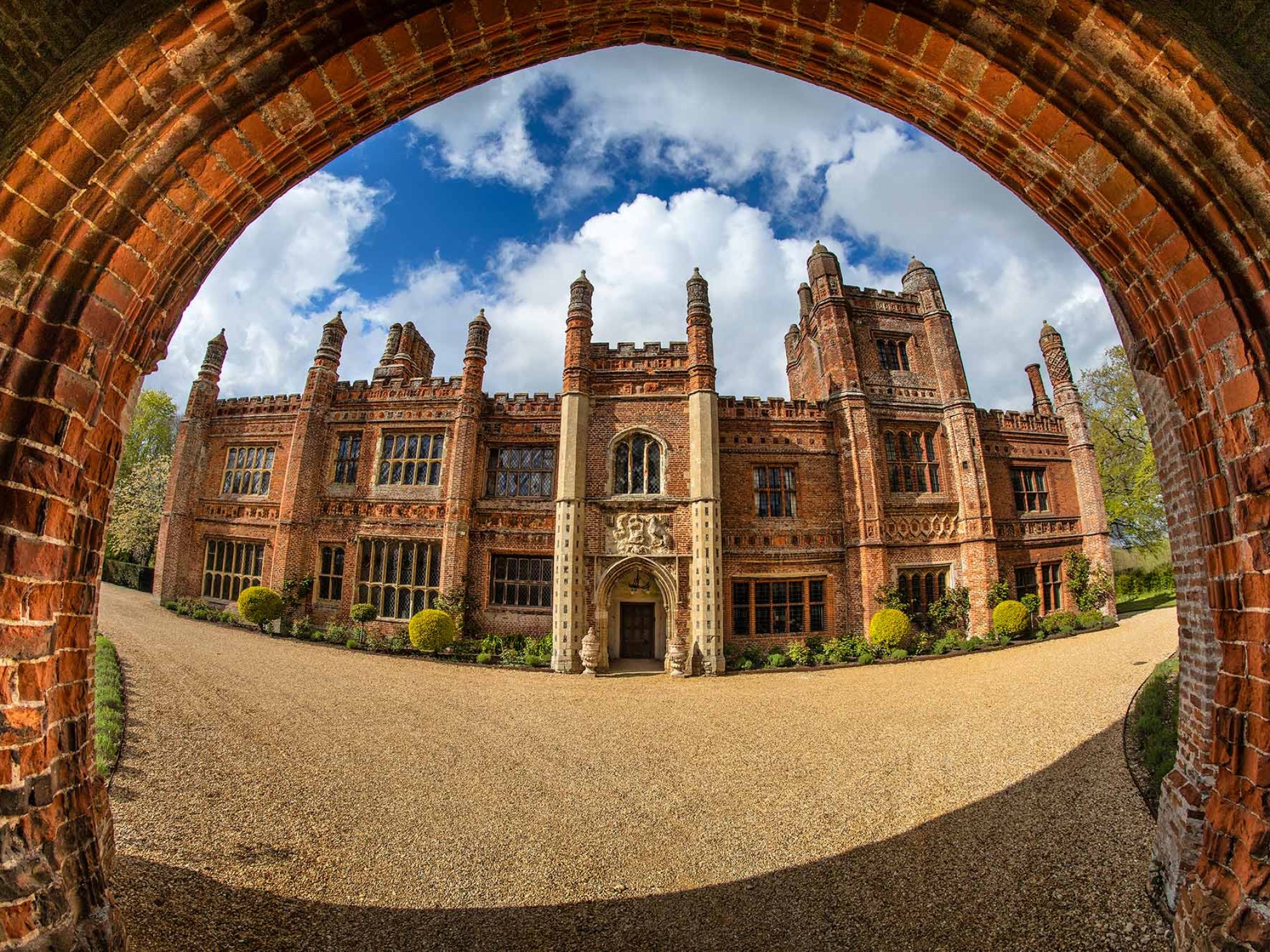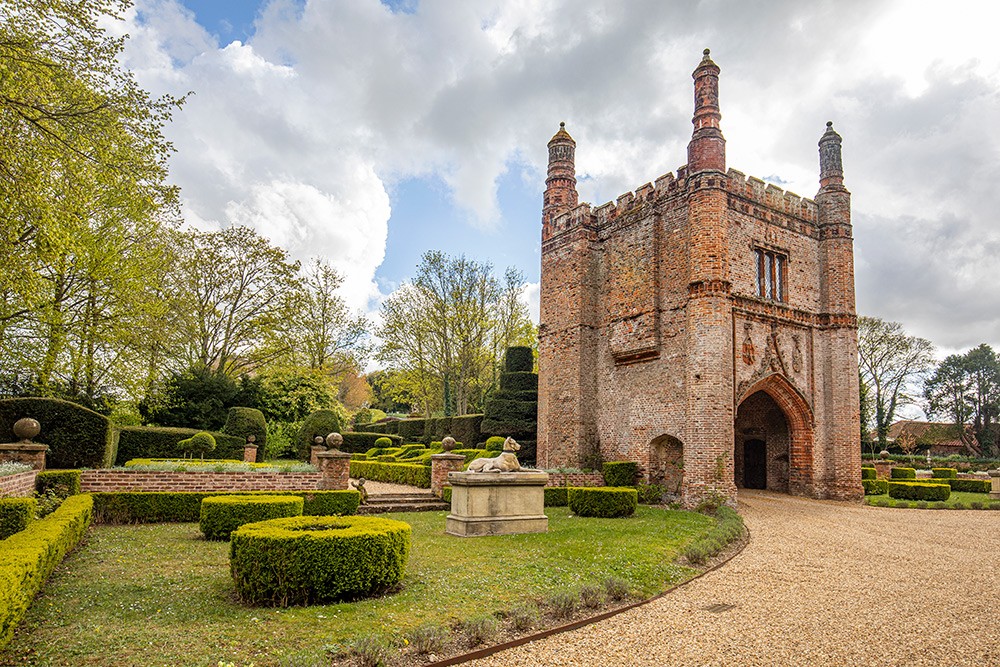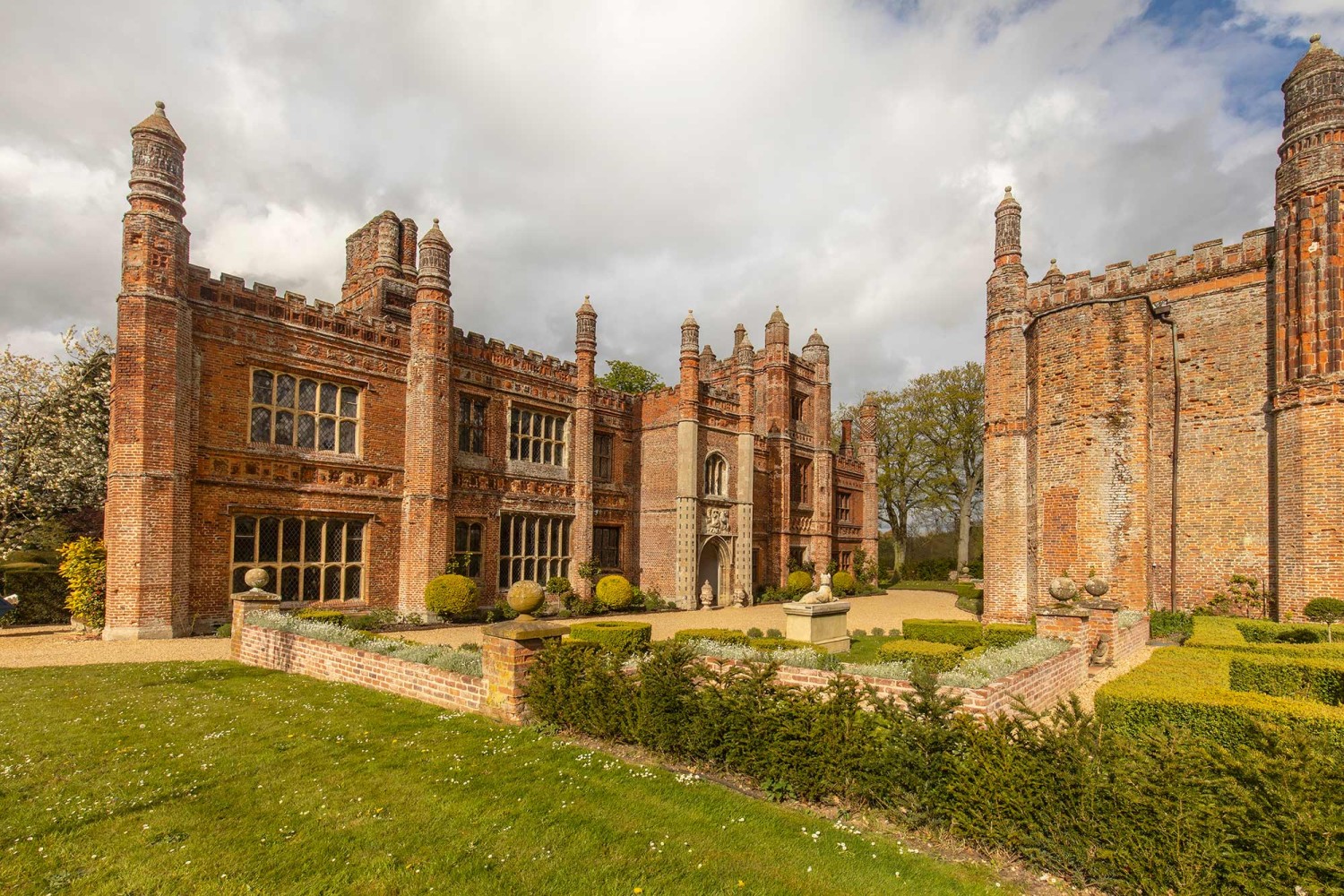
The remarkable tales of a Tudor treasure
With its extravagant ornamentation and magnificent towers and turrets, the breathtaking manor in East Barsham is one of the finest houses in the county – and it’s also one of the most intriguing
Norfolk is home to over 260 recognised historic halls and manor houses, although few are as stylistically astonishing as the spectacular East Barsham Manor just over two miles north of Fakenham. The magnificent masterpiece appears almost magically as you enter the village, with its deep red-brick towers rising commandingly from the treetops.
A unique jewel of Tudor architecture, it was described by renowned building historian Nikolaus Pevsner as “a picture book ideal of an early Tudor house, which is too good to be true when one first sets eyes on it.”
It’s impossible not to be struck by the splendour of East Barsham Manor, which was deliberately built as a statement with the intention to dazzle.
The house was likely constructed in the 1520s for Sir Henry Fermor as a powerful symbol of his family’s rising status. Known as ‘a person of great worth and dignity’ Fermor was assessed as being the richest man in Norfolk in 1523. His wealth is clearly reflected in the richness and grandeur of the building, which is widely considered to be the finest example of decorative brickwork in the county.
The luxurious manor is guarded by an imposing two storey gatehouse, which opens to show the stunning south façade. Thought to have been built just after the house, this striking structure is an incredible sight to behold, with its grand angle buttresses, panelled battlements, and outstanding ornamentation.
Above its huge moulded arch are the Royal Arms of King Henry VIII, who reputedly stayed at the manor on several occasions and used it as a base for visiting the nearby shrine at Walsingham.
The house itself is equally impressive, with a long embattled façade punctuated by eight marvellous polygonal buttresses. These are topped by an assortment of fabulous round finials and, despite many being modern reconstructions, they’re nothing short of spectacular.
The beautiful building is enriched with exquisite decorative brickwork, and the cluster of astonishing chimney shafts on the west wall are its crowning glory. Dated around 1525, they’re adorned with different patterns of decoration, with elaborate reticulation and diapers and intricately carved fleurs-de-lys.
It’s a rich and rare treasure and one of the only impressive Tudor houses left in Norfolk, as many crumbled and ruined when families fell from favour.
It may be standing today, but East Barsham Manor very nearly met a similar fate. Over the centuries the remarkable residence passed through a number of aristocratic families and underwent periods of decline and rebuilding. It was owned by the Fermor family for over 100 years until, in around 1628 it passed by the marriage of an heiress into the influential Calthorpe family.
In a similar way it fell into the renowned L’Estrange family of Hunstanton Hall around 1720, and in 1760 to the Astleys of Melton Constable. During these years the manor experienced little change, although it descended into decline during the end of the 18th century.

“During a late tour of Norfolk,” he wrote in 1808, “I saw the remains of an old manor house which I believe in richness of moulded brickwork exceeds anything of the kind in England.”
Despite its period of dilapidation, East Barsham Manor soon returned to its former glory.
A significant restoration project was undertaken from 1919 for Mr Colman of Norwich, and in 1938 the ruined part of the house was made habitable once again for a self-styled count called Count Jeremie Hapsburg-Lothringen.
The work of both periods was sympathetic to the original, with builders reusing things found in the house and carefully sourcing old materials. Soon enough the manor’s grandeur was fully restored, allowing it to pass to many more intriguing and influential people.
One of the most notable recent buyers was David Shaw, the business partner of Robert Stigwood - who was the manager of the legendary Cream and the Bee Gees and was once described as the most powerful tycoon in the entertainment industry. Shaw purchased the house in the early 1970s and the Bee gees themselves stayed there for a few months during this time, bringing a great deal of excitement to the otherwise quiet village.
Today East Barsham Manor is still privately owned, and it continues to astound passers-by with its extraordinary beauty. A truly mesmerising masterpiece, it’s protected as a Grade I listed building and is undoubtedly one of the most spectacular Tudor survivals in the entire country.

